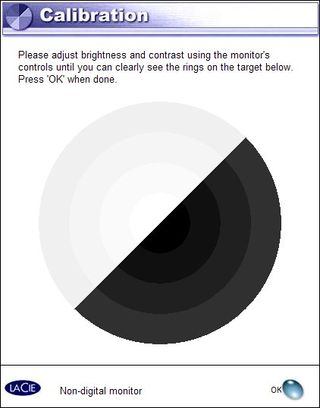Review: 20" LCD S-IPS Panels
Calibration
As before, we calibrated and measured the monitors with a LaCie colorimeter. We changed the settings slightly to make them more like those used for computer graphics, i.e. 5000 Kelvin for the color temperature, 2.2 gamma and brightness that was as close as possible to 110 cd/m². This last point may be surprising when you realize that some monitors claim to go up to 700 cd/m², and all claim 220 cd/m² as a minimum. You're right, they're all too bright. Unless the monitor is designed for public display, a lower brightness level is needed to produce a display that is easier on the eye and less garish. As a reminder, the ideal brightness level for conventional (CRT) monitors is around 85 cd/m².
Like last time, we are not giving profiles created by downloading from a test website. We need to check a few points with LaCie before returning to this formula. However, we still provide the settings we adopted, i.e. brightness, contrast, and color levels when we needed to set them individually.
If, by following the recommended settings, you find all the display tests tend toward red, as one of our readers once reported to us, you should forget our settings and create your own, using the following charts.
In the first one, you should be able to clearly distinguish the twenty available shades of gray, without there being any tendency to veer toward red, blue, or green.

On this one, make sure you can see four whites and four blacks.

Stay on the Cutting Edge
Join the experts who read Tom's Hardware for the inside track on enthusiast PC tech news — and have for over 25 years. We'll send breaking news and in-depth reviews of CPUs, GPUs, AI, maker hardware and more straight to your inbox.
Most Popular

